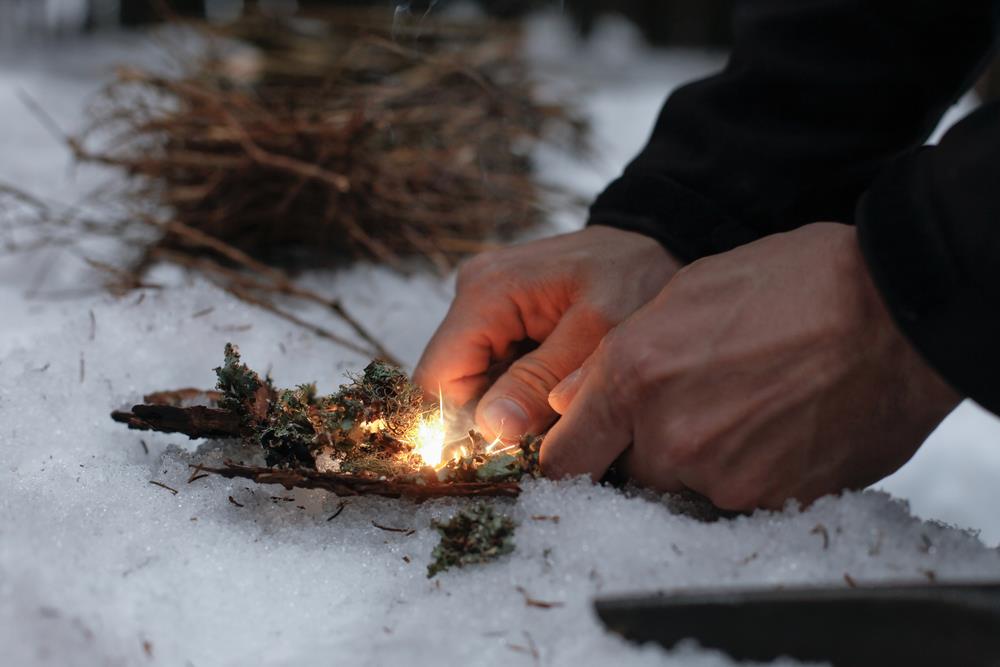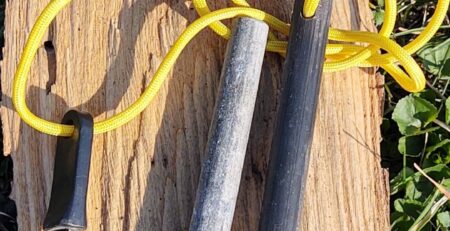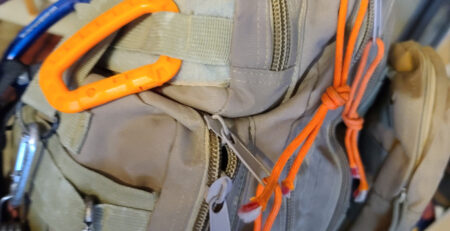How to Start a Fire in the Wilderness
Fire is so crucial for survival in the wild especially when lost or just taking an adventure. Ever wondered why almost every person starts a fire when in the wild whether camping or just taking an adventure? In a short while, I will show you exactly why fire is so important in the world and why you must know how to start one. You can agree with me that most people in the wild who find themselves in a situation where they need fire don’t have a lighter.
Well, I promise to show you exactly how you can start a fire in the wild with or without a lighter but first let’s see why fire is so important in the wild.
Why is It Important to Start a Fire?
Most people think of fire as a luxury only to realize of its crucial importance when in an outdoor visit or a survival situation. In a survival situation, fire can be lifesaving enabling you to do a lot and get through the danger of the wild. Most of the threats that people face in the wild when in a survival situation can easily be solved by fire going to show its importance.
Most common ways people die in the wildness and how fire can help?
- Hypothermia due to lack of body heat: Fire warms you.
- Snake and spider bites: Fire scares them away.
- Attack from predators: Fire keeps them away
- Insect bites: Fire again keeps them away
- Dehydration: Fire helps you melt water in ice regions
- Hunger: Fire helps cook edible raw food
- Think of committing suicide: Fire boosts your morale becoming your only friend
Those are just good examples to show you how fire is so important in the wild. In when in places with water sources, you will still need fire to boil the water and kill the pathogens and other bacteria in the water. Fire in the wild at night can be the only difference dying and seeing the light in the morning. It will warm you, give you light to accomplish tasks and scare away wild animals. The smoke from the fire can also act as a signal to the search team.
Do you see the importance of fire in a survival situation in the world?
I know you agree with me on this. Fire in the wild is very important to survival. The discovery of fire is what has changed humanity. Even before we learn how to start a fire in the wild, let first see how to prepare the ground for a well-built fire.
How to Build a Well-built Fire
You don’t just gather wood and start the fire as most people think. Starting a fire in the wild requires you to prepare. Even in your home, you have the fireplace nicely set. The very first step in starting a fire in the wild is building a good fire pit.
1- Build a Fire Pit
There are no fire rings in the wild, so you have to prepare a fire pit. First, choose a good location as this is where you will most probably spend the night. Doing it under a huge tree or under some cliff will ideal. All the vegetation and grass on the chosen spot must be cleared for a distance of 8-10 feet. Once you have a cleared area, dig several inches into the soil to remove the top layer which is set aside for emergencies. You can even use the loose soil as firewall and mount it around the newly built fire pit. If in a place with rocks, mount rocks on the edge of the fire pit to insulate it.
2- Gather Materials
What does your hunting backpack have that can help you gather as many materials as possible. You will need different materials that catch fire easily and others that burn for long periods. You can make it in the wild starting fire without enough materials to keep the fire going once it starts.
Scope the area and collect as much wood as you can to help you with the fire. If you’re in the camp where there is tinder, then use to start the fire.
Tinder
Tinder is among the smallest and easiest materials to get a fire started in the campfire. The following are some of the tinder forms:
- Wadded paper
- Wax
- Wood shavings
- Cardboard strips
- Fire starts and commercial fire sticks
- Dryer lint
- Dry leaves (works well in the case of wildfire where other materials are not easy to find)
Kindling
The next step is kindling the fire where you size it up by adding small branches and twigs that you collected earlier. Branches and twigs of about 1/8 and inches into the fire to size up slowly but ensure you don’t put it out.
Tip: Add small twigs and branches and slowly increase their size as the fire grows.
Firewood
Lastly, you can add logs that burn for long to keep the fire going up to the next day. Whole logs or split ones can both work depending on how long you want the fire to burn. The logs and woods must be completely dry to burn and stay lit for long.
Tip: Splitting logs might be impossible in the wild so start by putting them near the edge of the fire and let them catch fire slowly.
Water
Water is very necessary just in case you need to out the fire in the morning all when finished. Pour water on the fire when done to stop it spreading to other areas. Stir the ashes to ensure there is no fire left and then pour more water. You can always repeat this over and over until the ashes are cool to be held in your hand before you leave the scene. The worst mistake you can do is leave a campfire or a fire in the wild unattended as this can lead to a catastrophic widespread of fire burning the entire area.
Tip: The dirt or dug soil can be used to cover the fire area and prevent any chances of the fire starting on its own.
Ignition Source
What is the easiest way to start a fire in the wild? If lucky to have a match or lighter in your hunting bag, then you’re good to start. However, what happens when you have nothing that can start fire fast? This is where your fire starting skills are tested. You have to go the old ways our ancestral used to start a fire with any available tools. Did you know your bow can be used to start a fire? If you go hunting with bows and arrows, then your bow can be used to start a fire, but we will get to that in a short while. There are several other ways to start a fire in the wild that will discuss in a little while as you look forward to improving your fire starting skills in the wild.
3- Six Popular Ways You Can Build a Fire
Before you build a fire, you need to understand all the six popular ways that people build a fire in the wild to suit specific reasons. The arrangement you choose to build your fire will determine how long it lasts and how fast it burns. You can see why it is important to know the way you will build your fire. I’ll show you some of the most popular ways that people build fires in the wild and the purpose each way serves.
3.1- The Teepee Fire
The teepee is the most popular arrangement and one you need to know. Build a tepee by arranging the tinder and kindling it in the shape of a cone. Lit the center and let the logs burn from inside falling inward to feed the fire. Building a tepee is ideal when you have wet wood or green wood that does not burn well. The flame is usually hottest at the tip where there is oxygen. The heat generated from this arrangement is very intense and burns out wood quickly but ideal for warming you at night.
The teepee arrangement is probably the one you’ve seen in survival series where one needs to keep warm and have the fire burn until morning. The thicker end of a log or stick should always be placed at the top where the heat is intense so that it burns inward.
Video illustrating the teepee fire arrangement
Pros
- Gives intense heat
- Starts fire faster
- Can burn wet or green wood
Cons
- Burns woods quickly
3.2- The Lean-to Fire
The lean to fire is another great arrangement that does not need a lot of effort if you set it out correctly. Choose a medium sized log and place tinder next to it. The kindling is the leaned across the log as illustrated in the video below. Small dry branches and twigs can be placed after several layers of tinder. Once you light the tinder, you can add as much kindling as needed to grow the fire.
Video how lean fire is built
Pros
- Fire will size up without much trouble
- Once set up, fire starts pretty fast without any additional task
Cons
- More tinder and kindling are required.
3.3- The Cross-ditch Fire
The Cross-ditch fire is by far the most lasting arrangement for making any wildfires. On a tinder bed, put kindling in a crisscross fashion before you add woods and logs. Once everything is set, light the tinder and fire will slowly size up.
Video how cross-ditch fire is built
Pros
- Efficient consumption of fuel
- Long lasting to see you through the night
- Suitable for cooking
Cons
- A bit tedious to build
3.4- The Log Cabin Fire
The log cabin fire simply means creating fire by having a cabin arrangement. This is achieved by first kindling twigs and branches into the shape of a cabin while leaving a space in the middle. Place two sticks in opposite directions 4-6 inches apart. Continue stacking more sticks across each other until a square cabin is created.
Create a reasonably sized box and add tinder into the box. Once tinder is filled in the box, place more sticks on top of the cabin to cover the tinder. When everything is set, go right ahead and light your tinder.
Video showing the log cabin fire
Pros
- Rarely collapses
- Long lasting
- Provides warmth on all sides
Cons
- Burns out wood much faster
3.5- Upside Down (Pyramid)
The upside down fire is where your fire starts at the top and burns all the way down. It is quite simple to start. Place two small branches or logs on the ground in a parallel position. Have another solid log on top of the first layer in a perpendicular position. Keep on adding a few more layers alternating their direction each time. Each layer placed must be smaller than the previous layer.
When done, light the top of the layer and leave the flame to travel naturally down. This is another great way to light a fire in the wild without straining.
Video Upside down fire
Pros
- Long lasting
- Fire burns downwards requiring no attention during the night
- Quite fast to start
Cons
- Requires several logs that might have to use some power tools like chainsaw to cut and split firewood
- Does not produce intense heat
3.6- Create a Star
The star arrangement of fire is where you place log from different side meeting in the middle to form what appears like a star. I know woods in the wild can sometimes be in shortage especially if your hunting backpack does not have enough cutting items. Saving the few logs you find can get you through the cold of the night. This arrangement is quite effective at preserving wood where you pull them back a bit when you need to decrease the intensity if the fire.
Video How to build the Star Fire
Pros
- Quite effective and long lasting
- Consumer wood well
- Conserves fuel
Cons
- You have to monitor and control the fire regularly
4- Bonus: Tips/Tricks When Building a Well-built Fire
4.1- Choosing the Fire Location
Fire in the wild does not have the comfort zones that come with building fires in the camp or at homes. There is no fire pit, and one has to set a good spot to create a fire pit. You can agree with me choosing a location is very important. You don’t have to be the one burning the forest down. Stay away from trees and bushes that may catch fire and spread it.
A clear area away from dry leaves and other dry twigs is an ideal one. You don’t want to wake up smelling smoke everywhere so carefully choose a location that does not bring smoke your way. Check for the breeze and if its steady, you will know which direction the smoke will be going. Start your tinder where you intend to build your fireplace. Many times I have seen people start a fire somewhere and carry the tinder to another place. If you start your tinder somewhere else, then create a temporary fire there before transferring the fire to your main location.
4.2- Choosing the Foundation
Choosing a good foundation is crucial as poor foundations will kiss fire that as just started. Avoid wet and cold areas if possible and build your fire on a dry foundation. In cases where every part is wet or cold, try and build a foundation for your fire using dry rocks. I REPEAT, DRY ROCKS as wet rocks can explode in your face. I will tell you later on why wet rocks are not ideal for starting a foundation especially those taken from the riverbed area.
The aim here is to elevate your foundation away from the water beneath. Dry dirt can also be used to raise the foundation higher. If possible, try and make air flow beneath the foundation. A good way to do this is have rocks on two sides with two opening instead of having rocks circle your foundation. A good spot with a good foundation and big rocks around it will make it easier for you to start a fire and maintain it. The big rocks act as the windbreaker creating a barrier around the fire pit preventing the wind from spreading the fire.
4.3- Best Time to Start a Fire in the Wild
When is the best time to start the fire? Do you wait until dark falls to start the fire? When planning to start a fire, timing is very crucial. It is always important to start the fire a few hours before the sun goes down. This can be 2-3 hours earlier as you need the light of the sun to collect materials and observe what you’re doing.
4.4- Safety Tips
- Never Leave Before Putting out the Fire – Fire might not seem dangerous especially when controlled but can turn ugly and destroy millions of properties and life. The first rule when leaving the spot of the wildfire is always to turn it off. I have said this before and will say again; ensure you extinguish the fire completely before leaving the scene. Poor water on the fire and cover it wet soil before pouring more water. You must be able to hold the wet ashes in your hand and confirm there is no slightest of burning wood that can start a wildfire once you’ve gone. Most of the fires seen around the world are mostly caused by human error, and you don’t want to be one causing it.
- Never use Rocks from the River Beds – I talked about this earlier when building your foundation using rocks. Wet rocks from the river beds have water in them that will expand once heated. These rocks can explode on your face causing serious injuries when the water expands and breaks them apart. The water in the rocks boils and increases in size exploding the rocks into small pieces. It is simple science that you probably learned in high school that you must be aware of when using rocks to build a foundation.
- Build Fires Away from Branches and Steep Slopes – To avoid the risk of the fire spreading, build it away from overhanging branches, rotten stumps, dry grass, leaves, logs and steep areas. Even the extra wood you set aside must be piled some distance away from the fire.
- Never Leave a Wildfire Unattended – Even the smallest of breeze will spread the fire away and start a wildfire. This is why it is necessary to have every material ready before you starting the fire.
To read this article in its entirety visit https://stayhunting.com/how-to-start-a-fire-in-the-wilderness/
Special thanks to Brand Cox from Stay Hunting for sharing this great article with us. Check out his blog for more informative articles.


















